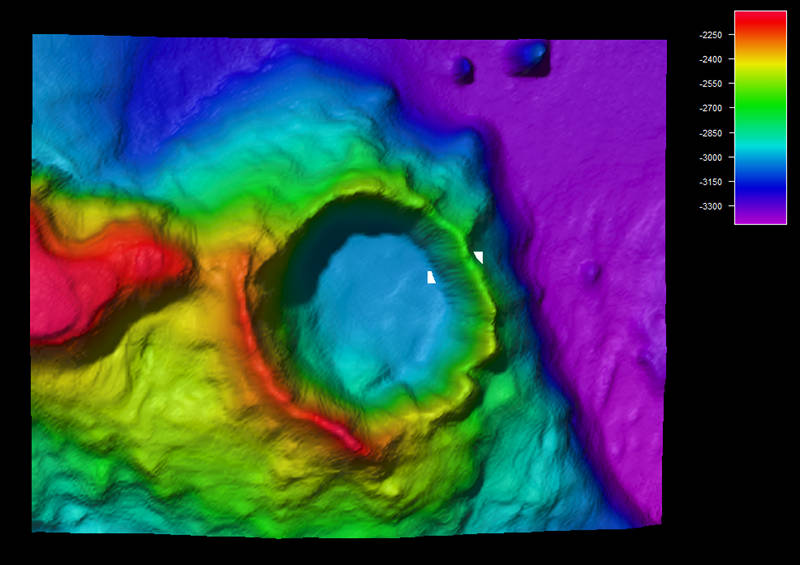Dive 04 of the expedition was the deepest yet, starting 3,035 meters deep on the eastern ridge of a crater that is located east of Maro Reef. The dive objectives were to explore for high-density communities of deep-sea corals and sponges along the ridge of the crater, as well as gain insights into how this peculiar feature might have formed geologically. The dive started on flat, manganese-coated pavement at 3,035 meters with few animals including sea cucumbers, stalked sponges, and an unbranched bamboo coral. As the ROV moved towards the base of the wall, a field of manganese nodules (two to five centimeters in diameter) was seen on a flat surface, and the density of animals remained very low. Large boulders were present at the base of the wall. As the ROV moved up the wall of the crater, the substrate changed to pillow lavas that occasionally had animals on them, including stalked crinoids, ophiuroids, tube worms, and bamboo corals. At 2,800 meters, the density of animals slightly increased and several stalked sponges, black corals, bamboo corals, and sea cucumbers were seen. The density of animals remained low as the ROV made its way over the crest of the ridge, mostly including stalked crinoids and sponges, and remained low as the ROV moved towards the outer edge of the ridge and moved down the outer edge of the crater. Few fishes were observed during this dive and included eels and rattails.
